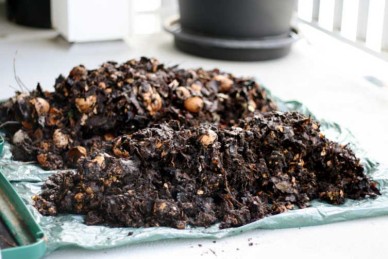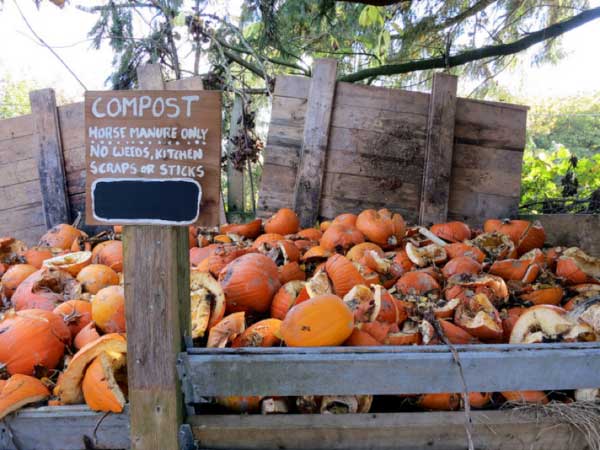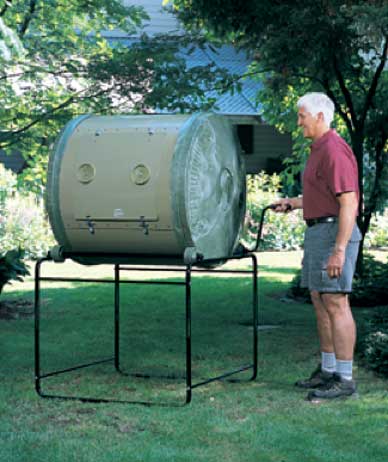Composting: what is it and why should you be doing it?

The definition of compost: a mixture of decayed plants, food, etc. that can be added to soil to help plants grow — Oxford English Dictionary.
Benefits of Composting
The history of composting can be traced as far back as the Akkadian Empire (2320–2120BC), the Stone Age Scots did it, as did the Egyptians, Greeks and Romans. Mankind has composted for thousands of years because of the many benefits it offers the soils we farm. These include:
- Improving the structure of almost any soil type, strengthening the ability of the soil to retain nutrients, air and moisture. This all contributes to the growth of healthier, stronger crops/plants.
- It attracts earthworms and other soil creatures, such as centipedes and red worms, which will further enhance the make-up of the soil as it is processed by their digestive systems.
- It can also reduce pest problems, as it contains natural suppressants which help to control insects and prevent the spread of many fungal diseases.
- It retains nutrients, especially micro-nutrients such as copper, zinc, iron and manganese which are vital to the healthy growth of plants and crops. These are only needed in small quantities, but are not usually present in compost bought from garden centres.
- It is ecologically and economically sound, as you can recycle much of your household waste, from peelings to tea bags, coffee grounds and newspapers.
- Producing it yourself ensures a constant supply all year round saving you money.
Six elements required for successful composting
No matter what method you choose, be it bin, heap or tumbler you need to ensure these essentials for maximum composting effectiveness:
- Climate – temperatures needs to be at least 16°C, day and night so it’s best to start your composting in the late spring/early summer
- Nitrogen to carbon ratio – you need a good mix of both for composting to work. Greenery such as grass clippings and vegetable scraps provide the nitrogen as they decompose quickly while cardboard, paper and wood chips will take care of the carbon content
- Aeration – as decomposition requires heat to be effective, aeration is required to ensure that the heat can spread throughout the compost. Creating layers of different ingredients can help keep air flowing through your compost but occasionally turning with a fork will help if it gets to dense. Tumblers are designed to aerate very effectively
- Moisture – the moisture content should be around 50%. A simple way to check this is to take a handful and give it a squeeze. If moisture drips out, it is too wet, and if you cannot form it into a ball that sticks together, it is too dry. If too wet, add more dry ingredients such as sawdust or dried leaves. If too dry, add a little water from the garden hose to restore the moisture
- Surface area – larger ingredients need to be broken down in order to bruise the skin of organic material and also to increase the surface area. This speeds up the composting process significantly.
- Volume – if you are using a compost container, it needs to be 2/3 full in order for enough heat to be generated over a 4–7 day period

These pumpkins need to be broken up a little more to achieve the most efficient composting and avoid them just rotting. Source: Ruthanddave – License
Ingredients for great compost
Within reason, you can use anything to create good compost that will biodegrade and doesn’t contain any man-made chemicals. There needs to be a balance of nitrogen-based and carbon-based ingredients, some of which are outlined below:
Green (Nitrogen)
- Fruit & vegetable scraps – from kitchen bins
- Grass clippings
- Garden plants, flowers, and cuttings
- Nettles
- Green comfrey leaves – including alfalfa, mustard plants etc
- Seaweed and kelp
- Coffee grounds and tea leaves
Brown (Carbon)
- Newspaper, shredded paper and cardboard
- Chicken/pigeon bedding
- Sawdust/wood shavings
- Wood ash
- Pine needles
- Straw or hay
- Leaves – fallen in the Autumn
- Hair – Either your own or pet hair
DO NOT USE anything that has chemicals added to it, or items that will clog up the compost or won’t easily biodegrade, here are a few common ones to avoid:
- Shiny paper
- Wood cuttings/shavings from painted or treated wood
- Nappies or sanitary products
- Meat/fish
- Oil/fat
- Pet waste
- Diseased plants
- Seedling weeds
- Bones
- Weed seeds
Hot vs cold composting
Decomposition occurs naturally and, except for extreme conditions, it’s virtually impossible to stop it. However, decomposition doesn’t necessarily occur efficiently. When we provide the micro bugs with a good mixture of browns and greens, as well as some water and air, decomposition can be very efficient. This is known as “hot” composting, but is sometimes called “aerobic” composting because the microbes that require air have enough to live, eat and reproduce quickly. The hot compost pile can reach temperatures as high as 160 degrees Fahrenheit, which will have the following effects:
• It will kill some weed seeds
• It will make most of the microbes very active
• It will deter worms, slugs and snails etc.
As the pile cools, the worms will return to assist in the decomposition. Hot composting is fast, and a well maintained compost heap can fully decompose in only a few weeks. But circulating the air and the ingredients is key to this, so carefully mixing up your compost pile with a rake can really help. Or, better still, use a compost tumbler that allows you to rotate the compost within a barrel, saving time and effort.
“Cold” composting is slower, primarily because although the environment is hospitable to some of the micro-organisms required for decomposition it is not altogether ideal for maximum multiplication. This is the form of composting that almost always occurs in nature, where the mix is often comprised of dry leaves and dead wood. It will decompose over time, but the temperature never gets very high, and the process can take years. So for this reason most growers will want to create a hot composting environment
Lead pic source: Lindsay.dee.bunny – license
Most recent Growing articles
- Five unusual and versatile vegetables to grow this spring 24th January, 2016
- Composting: what is it and why should you be doing it? 02nd November, 2015
- Know your onions: Growing onions, leeks, shallots and garlic 15th June, 2015
- Growers’ yearbook December – edible hedgerows and other ideas 01st December, 2014
- Growers’ yearbook November 04th November, 2014
- Growers’ Yearbook: October 04th October, 2014








Leave a reply